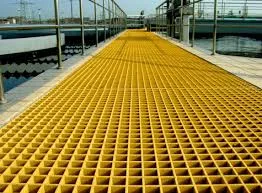
-
 Afrikaans
Afrikaans -
 Albanian
Albanian -
 Amharic
Amharic -
 Arabic
Arabic -
 Armenian
Armenian -
 Azerbaijani
Azerbaijani -
 Basque
Basque -
 Belarusian
Belarusian -
 Bengali
Bengali -
 Bosnian
Bosnian -
 Bulgarian
Bulgarian -
 Catalan
Catalan -
 Cebuano
Cebuano -
 China
China -
 China (Taiwan)
China (Taiwan) -
 Corsican
Corsican -
 Croatian
Croatian -
 Czech
Czech -
 Danish
Danish -
 Dutch
Dutch -
 English
English -
 Esperanto
Esperanto -
 Estonian
Estonian -
 Finnish
Finnish -
 French
French -
 Frisian
Frisian -
 Galician
Galician -
 Georgian
Georgian -
 German
German -
 Greek
Greek -
 Gujarati
Gujarati -
 Haitian Creole
Haitian Creole -
 hausa
hausa -
 hawaiian
hawaiian -
 Hebrew
Hebrew -
 Hindi
Hindi -
 Miao
Miao -
 Hungarian
Hungarian -
 Icelandic
Icelandic -
 igbo
igbo -
 Indonesian
Indonesian -
 irish
irish -
 Italian
Italian -
 Japanese
Japanese -
 Javanese
Javanese -
 Kannada
Kannada -
 kazakh
kazakh -
 Khmer
Khmer -
 Rwandese
Rwandese -
 Korean
Korean -
 Kurdish
Kurdish -
 Kyrgyz
Kyrgyz -
 Lao
Lao -
 Latin
Latin -
 Latvian
Latvian -
 Lithuanian
Lithuanian -
 Luxembourgish
Luxembourgish -
 Macedonian
Macedonian -
 Malgashi
Malgashi -
 Malay
Malay -
 Malayalam
Malayalam -
 Maltese
Maltese -
 Maori
Maori -
 Marathi
Marathi -
 Mongolian
Mongolian -
 Myanmar
Myanmar -
 Nepali
Nepali -
 Norwegian
Norwegian -
 Norwegian
Norwegian -
 Occitan
Occitan -
 Pashto
Pashto -
 Persian
Persian -
 Polish
Polish -
 Portuguese
Portuguese -
 Punjabi
Punjabi -
 Romanian
Romanian -
 Russian
Russian -
 Samoan
Samoan -
 Scottish Gaelic
Scottish Gaelic -
 Serbian
Serbian -
 Sesotho
Sesotho -
 Shona
Shona -
 Sindhi
Sindhi -
 Sinhala
Sinhala -
 Slovak
Slovak -
 Slovenian
Slovenian -
 Somali
Somali -
 Spanish
Spanish -
 Sundanese
Sundanese -
 Swahili
Swahili -
 Swedish
Swedish -
 Tagalog
Tagalog -
 Tajik
Tajik -
 Tamil
Tamil -
 Tatar
Tatar -
 Telugu
Telugu -
 Thai
Thai -
 Turkish
Turkish -
 Turkmen
Turkmen -
 Ukrainian
Ukrainian -
 Urdu
Urdu -
 Uighur
Uighur -
 Uzbek
Uzbek -
 Vietnamese
Vietnamese -
 Welsh
Welsh -
 Bantu
Bantu -
 Yiddish
Yiddish -
 Yoruba
Yoruba -
 Zulu
Zulu
grp winding machine
Understanding the GRP Winding Machine and Its Importance in Modern Manufacturing
The GRP (Glass Reinforced Plastic) winding machine plays a pivotal role in the manufacturing industry, especially in the production of composite materials. This sophisticated technology is designed to create high-strength cylindrical products, such as pipes, tanks, and various structural components. By utilizing the unique properties of glass fibers and resins, the GRP winding machine delivers products that are not only lightweight but also possess exceptional durability and corrosion resistance.
How the GRP Winding Machine Works
The operation of a GRP winding machine involves the precise winding of glass fibers around a core or mandrel. The process begins with the selection of appropriate resin, typically a thermosetting polymer that hardens when cured. The machine then applies layers of glass fibers that are impregnated with the resin in a controlled manner. The winding process can be facilitated through a variety of patterns, including helical, hoop, or spiral orientations, depending on the specific requirements of the final product.
Once the desired thickness is achieved, the composite is heated or allowed to cure at ambient temperatures. This curing process ensures that the resin hardens, solidifying the structure and enhancing its mechanical properties. After curing, the product is removed from the mandrel for finishing touches, which may include cutting, drilling, or surface treatment to achieve specific dimensions and aesthetic qualities.
Benefits of GRP Over Traditional Materials
grp winding machine

One of the primary advantages of using GRP materials produced by winding machines is their outstanding strength-to-weight ratio. Compared to traditional materials like steel or concrete, GRP components are significantly lighter, which can reduce transportation costs and ease handling during installation. Furthermore, the corrosion resistance of GRP makes it an ideal choice for industries such as water treatment, oil and gas, and marine applications, where exposure to harsh environments is common.
Moreover, the versatility of the GRP winding process allows for customization in terms of design and performance characteristics. Manufacturers can tailor the resin formulation and fiber orientation to meet specific load-bearing requirements, ensuring that the end product is suited to its intended application.
The Future of GRP Technology
As technology continues to advance, the role of GRP winding machines is expected to grow further. Innovations in automation, sensor technology, and advanced materials are likely to enhance the efficiency and precision of the winding process. Additionally, as industries search for sustainable alternatives to traditional materials, the demand for composite materials is expected to rise, positioning the GRP winding machine as a cornerstone of modern manufacturing practices.
In conclusion, the GRP winding machine is an essential tool in the production of high-performance composite materials. Its ability to create lightweight, durable products with customizable properties makes it invaluable across various industries, paving the way for continued innovation and development in manufacturing technologies.
Latest news
-
Exploring the Benefits of Top Hammer Drifter Rods for Enhanced Drilling PerformanceNewsJun.10,2025
-
High-Precision Fiberglass Winding Machine for GRP/FRP Pipe Production – Reliable & Efficient SolutionsNewsJun.10,2025
-
FRP Pipes & Fittings for Shipbuilding - Corrosion-Resistant & LightweightNewsJun.09,2025
-
Premium FRP Flooring Solutions Durable & Slip-ResistantNewsJun.09,2025
-
Premium Fiberglass Rectangular Tanks Durable & Lightweight SolutionNewsJun.09,2025
-
Tapered Drill String Design Guide Durable Performance & UsesNewsJun.09,2025









